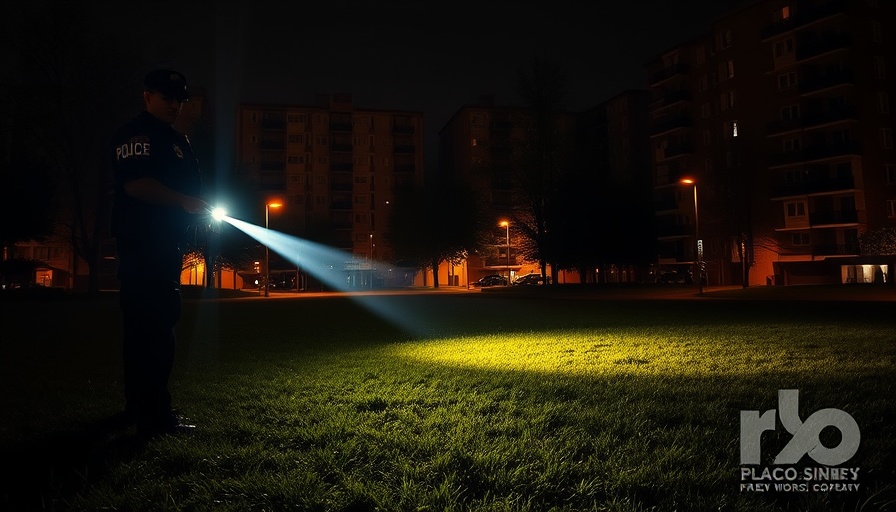
A Chilling Call to Action: The Dangers of Fabrication
The recent incident in Hesperia, California, wherein a man staged a fake home invasion to incite a deadly confrontation with law enforcement, underscores alarming trends in police engagements and public safety. On September 20, 2023, authorities responded to a 911 call that turned out to be a meticulously crafted ploy. Such incidents not only jeopardize officer safety but also raise critical discussions surrounding policing practices and community relationships.
Understanding the Incident: A Breakdown of Events
Upon responding to the emergency, the San Bernardino County deputies quickly encountered a masked individual holding what appeared to be a firearm. As the suspect pointed the weapon towards them, the situation escalated into a shooting aftermath that led to the suspect's death. What was initially perceived as a dire threat was later revealed to be an imitation gun designed to look like a genuine firearm. A significant factor is that the call was traced back to the suspect's personal phone, highlighting a disturbing trend of individuals attempting to manipulate law enforcement responses.
Viewer Reactions: The Role of Body Cameras in Modern Policing
This incident was captured on body-worn cameras, which are increasingly being recognized for their role in law enforcement accountability. The footage from the deputies provided a narrative that would otherwise be difficult to verify, showcasing the importance of technology in addressing police misconduct and transparency. Body cameras serve as a double-edged sword—while they document interactions for public scrutiny, they also bear witness to the unpredictable nature of police work, often putting officers in situations with life-altering consequences.
A Wider Implication: The Future of Police Training and Community Relations
As police departments continue to embrace innovations in technology—such as body cameras and AI—there is an urgent need for training programs that prepare officers for encounters with individuals who may engage in deceptive practices. This incident raises significant questions about police protocols in response to emergencies that appear staged, leading to discussions on how training might evolve to mitigate risks and enhance decision-making in chaotic situations.
Analysis of Law Enforcement Policies: Preventing Tragic Encounters
This shocking event has triggered a renewed focus on the policies governing law enforcement engagement during high-stress scenarios. Policymakers are urged to reassess current protocols, ensuring they align with best practices in de-escalation, citizen engagement, and operational strategy. By fostering open dialogue and collaboration among police leadership and community advocates, there’s potential to craft more effective policies that prioritize safety and accountability.
Police Recruitment and Community Engagement: Building Trust
Finally, the relationship between police officers and the communities they serve is at the forefront after this incident. With an increased need for transparent communication and trust-building endeavors, departments are prompted to rethink recruitment strategies. Ensuring that new officers share a commitment to uphold ethical standards and connect with community needs is paramount for future success in public safety and law enforcement integrity.
In conclusion, events such as these illuminate key issues within law enforcement, from the dangers faced by officers to the trust dynamics between them and citizens. Every instance where a life is lost—or altered due to misinformation—necessitates critical reflection and action. The journey toward reforming the structures in place and enhancing community relations is long and fraught with challenges, but it is clearly essential in ensuring safer encounters in the future.
If you want to stay informed about changes in police practices and how to advocate effectively for police reform, now is the time to engage. Explore various channels where police-community interactions can be improved and discover ways you can contribute to positive change. Whether you're part of a local agency, a policymaker, or simply an interested civilian, your voice matters.
 Add Row
Add Row  Add
Add 

 Add Element
Add Element  Add Row
Add Row 




Write A Comment